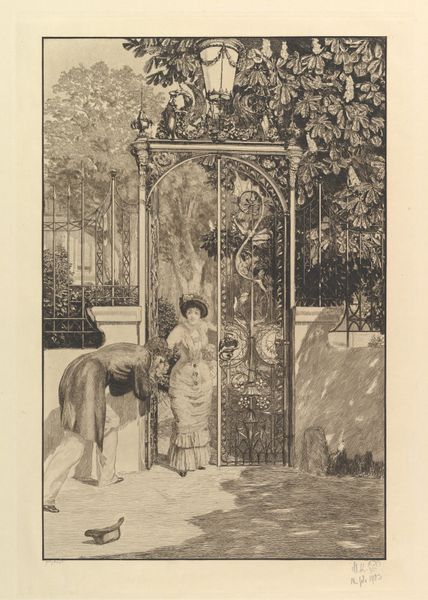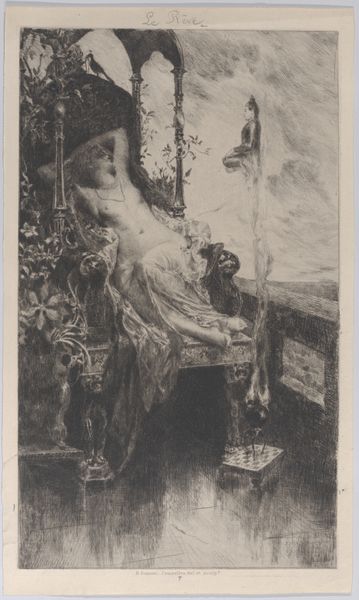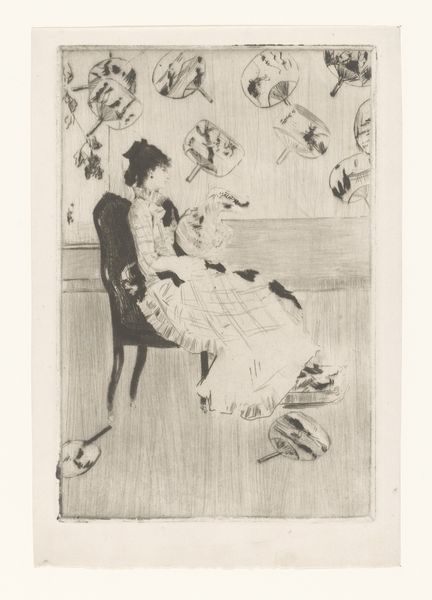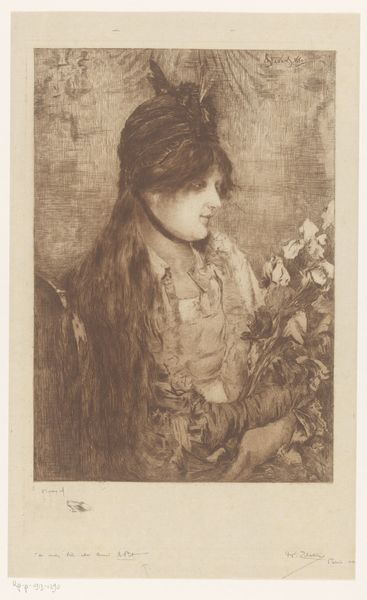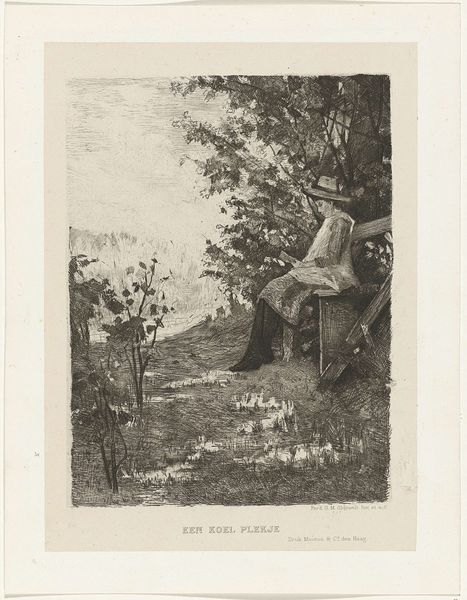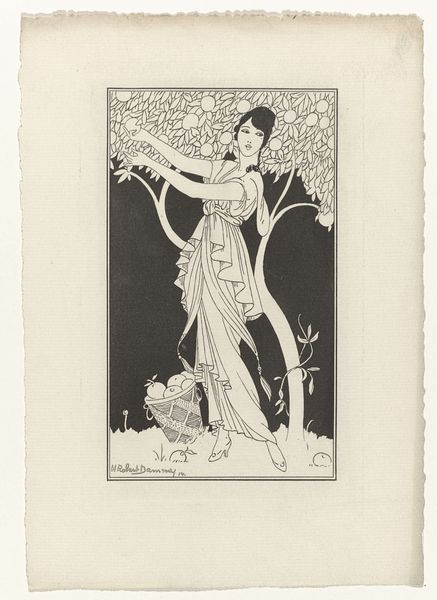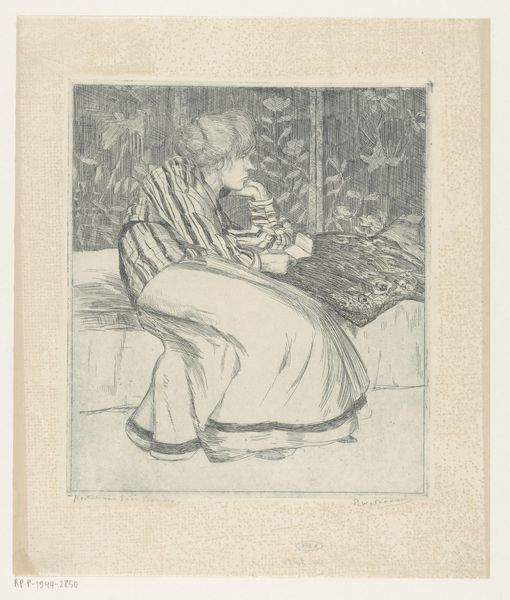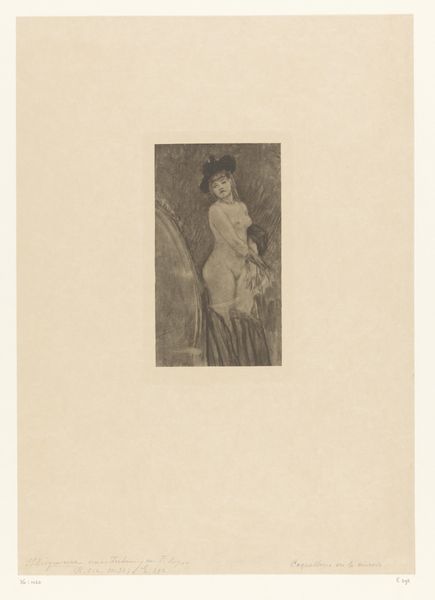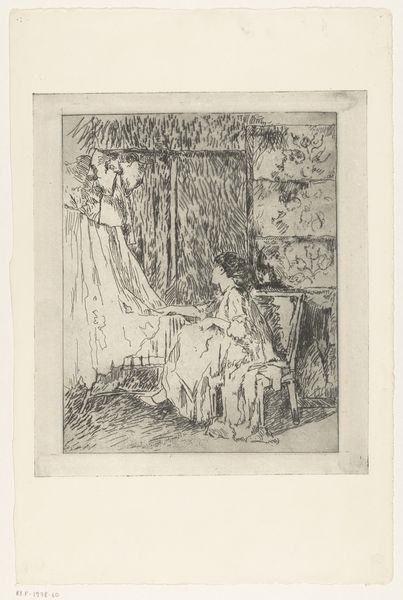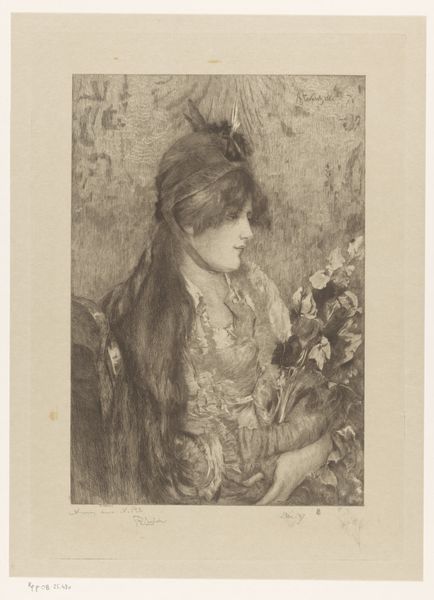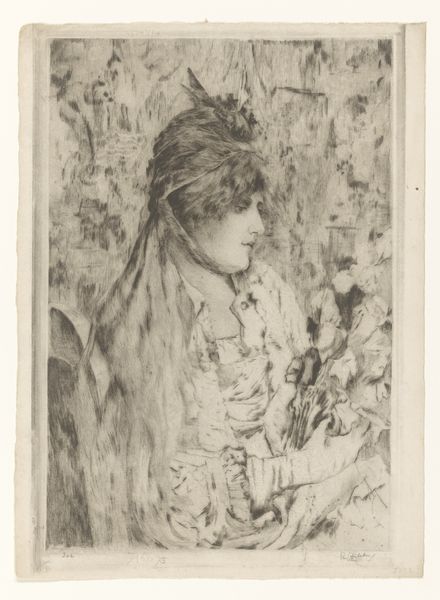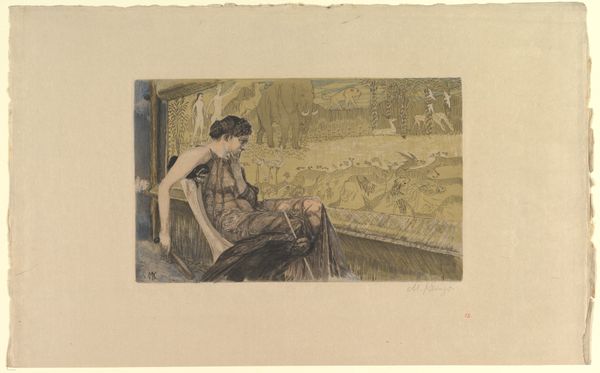
drawing, print
#
drawing
#
garden
# print
#
landscape
#
figuration
#
symbolism
#
genre-painting
Dimensions: Plate: 17 1/2 × 10 7/16 in. (44.5 × 26.5 cm) Sheet: 21 7/8 × 15 15/16 in. (55.6 × 40.5 cm)
Copyright: Public Domain
Editor: Here we have Max Klinger's print, "First Encounter," part of his "A Love" series, created between 1887 and 1903. It depicts a woman in a carriage with a man in the background. It has this wistful, almost melancholic quality to it, perhaps from the stark contrasts. What are your initial thoughts on this work, viewed through a historical lens? Curator: Well, viewing Klinger’s work requires understanding the cultural anxieties of the late 19th century. Consider the burgeoning industrialization and shifting social roles; how do you see those reflected here? This image comes from a suite of prints meant for a private audience, a bougie parlor if you will. What political tensions or class relations might Klinger subtly address or completely ignore? Editor: I notice how the woman is the focal point, seated prominently in the carriage, while the man is partially obscured, lurking in the background. Is that significant? Curator: Absolutely. Think about the changing role of women in society during this time. Was this encounter illicit or acceptable by the society and societal standards portrayed? Does Klinger’s piece challenge or reinforce conventional gender roles? Editor: It's fascinating to think about how this artwork participates in those social conversations, either by subtly supporting or challenging existing norms. Curator: Exactly. The garden setting itself could be seen as a loaded site, suggestive of secrets and unspoken intentions but also the supposed Eden. These landscapes were controlled expressions of class and access, where encounters were curated and made deliberately “happen.” In other words, this isn't really nature... It's just a drawing of an idea of nature! The composition asks questions rather than making definitive pronouncements. This encourages closer reading and allows multiple views of engagement and intent. Editor: So it seems the social context really shaped both the creation and reception of this piece. It sounds like to understand Klinger, we must understand his place within cultural and societal history. Thanks, that’s been really insightful. Curator: Indeed, this work's complexity lies not just in what is shown, but in how it interacts with the unspoken rules of its time. My pleasure.
Comments
No comments
Be the first to comment and join the conversation on the ultimate creative platform.

